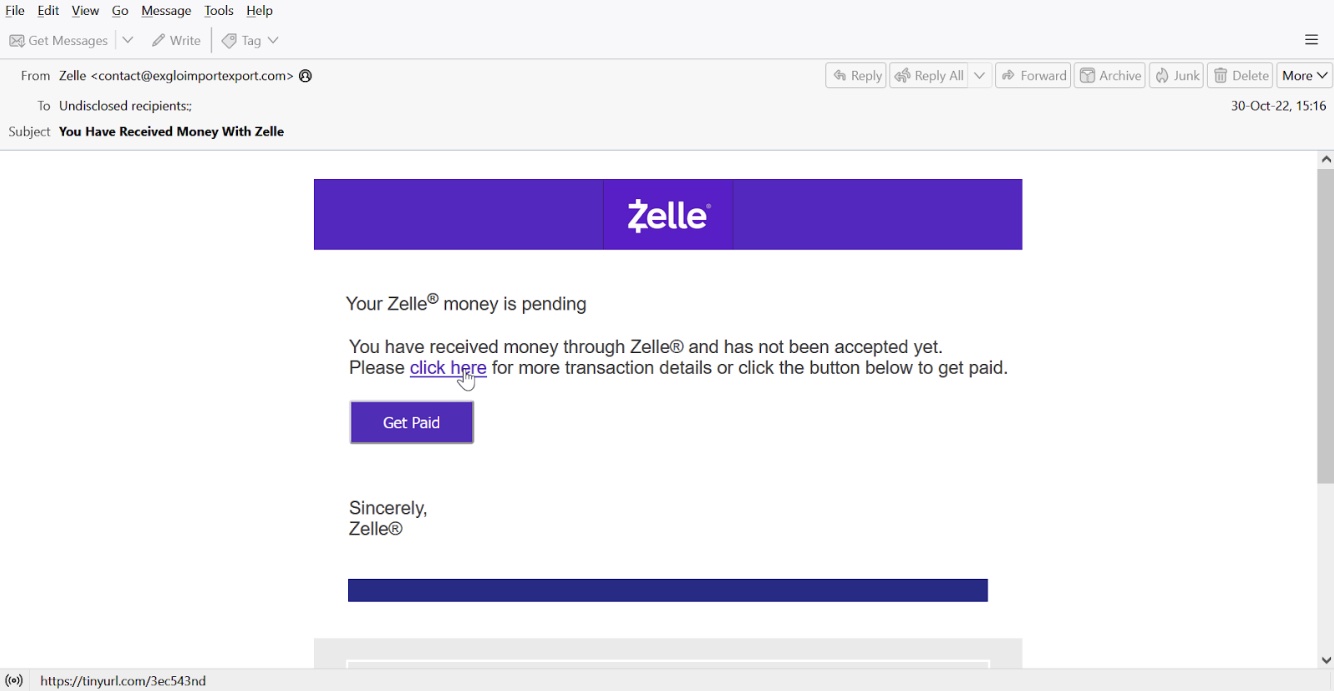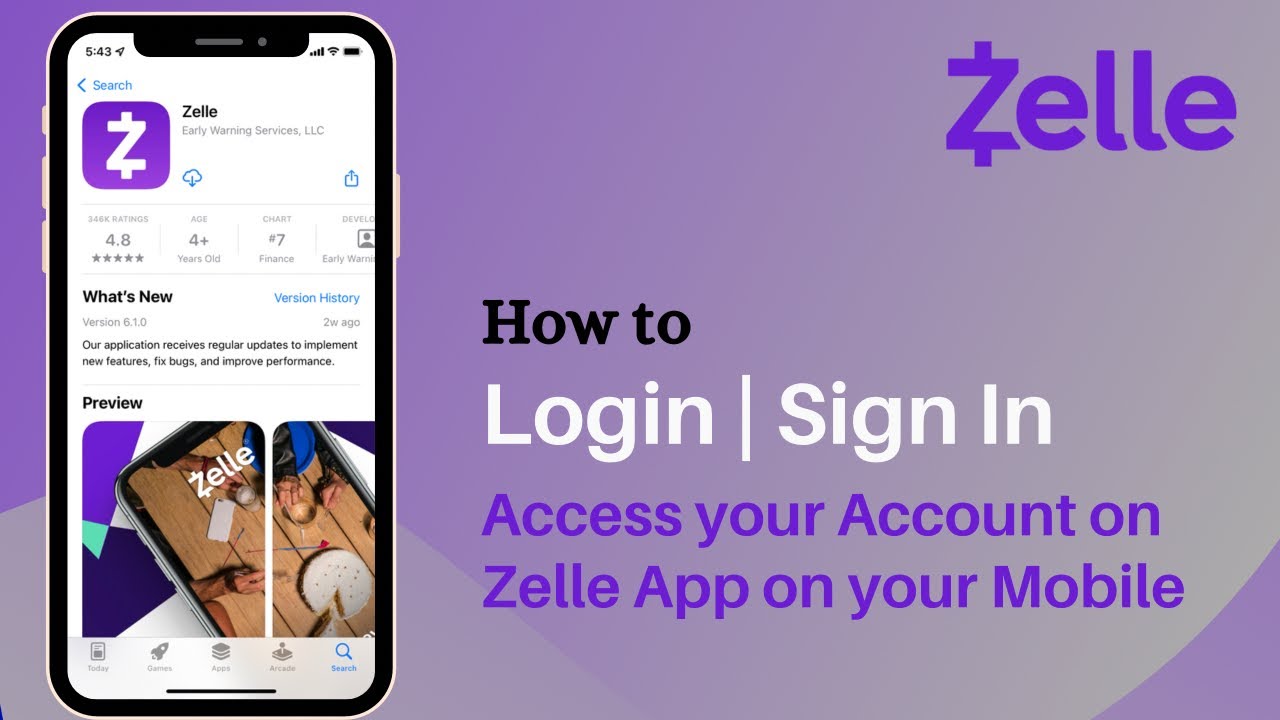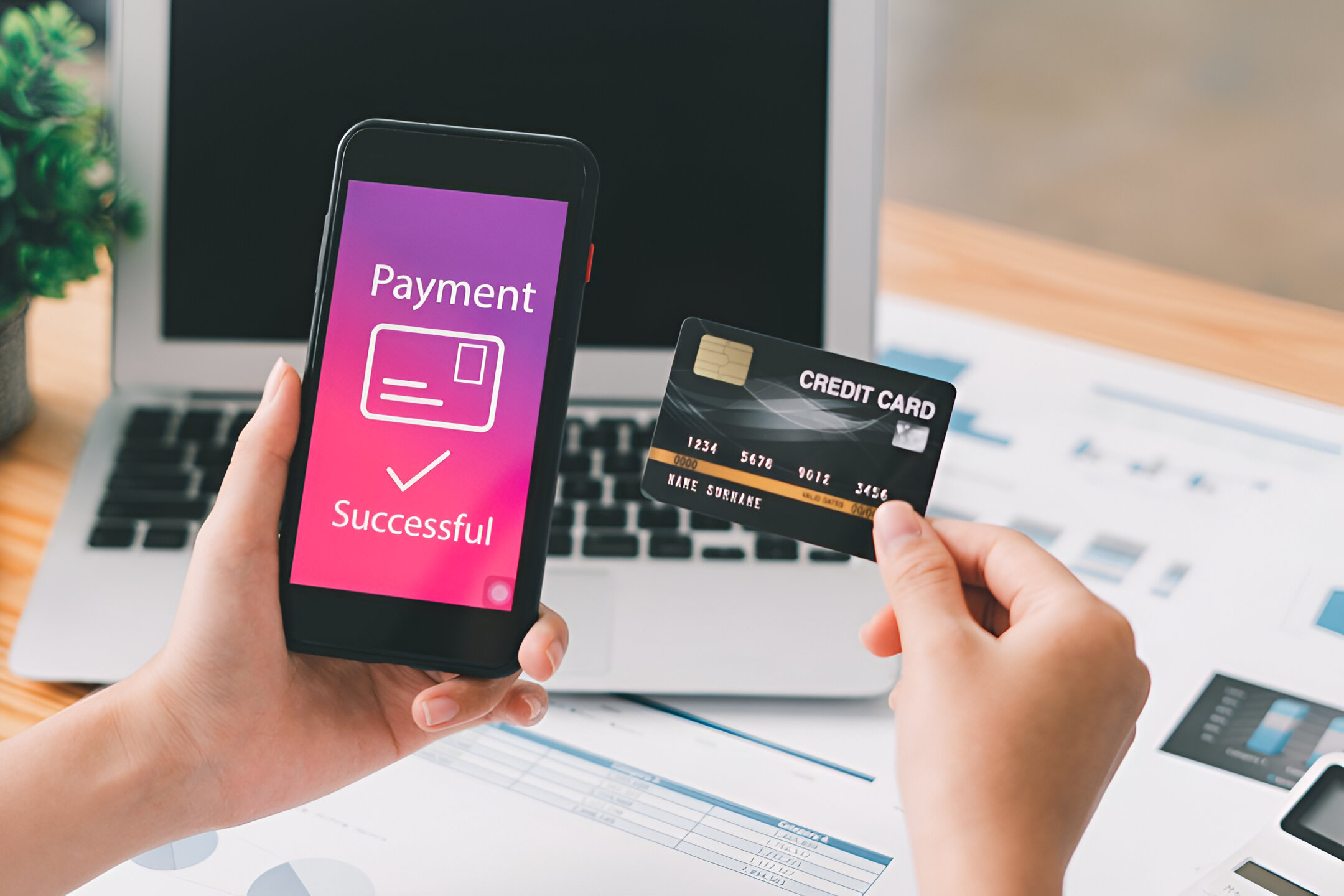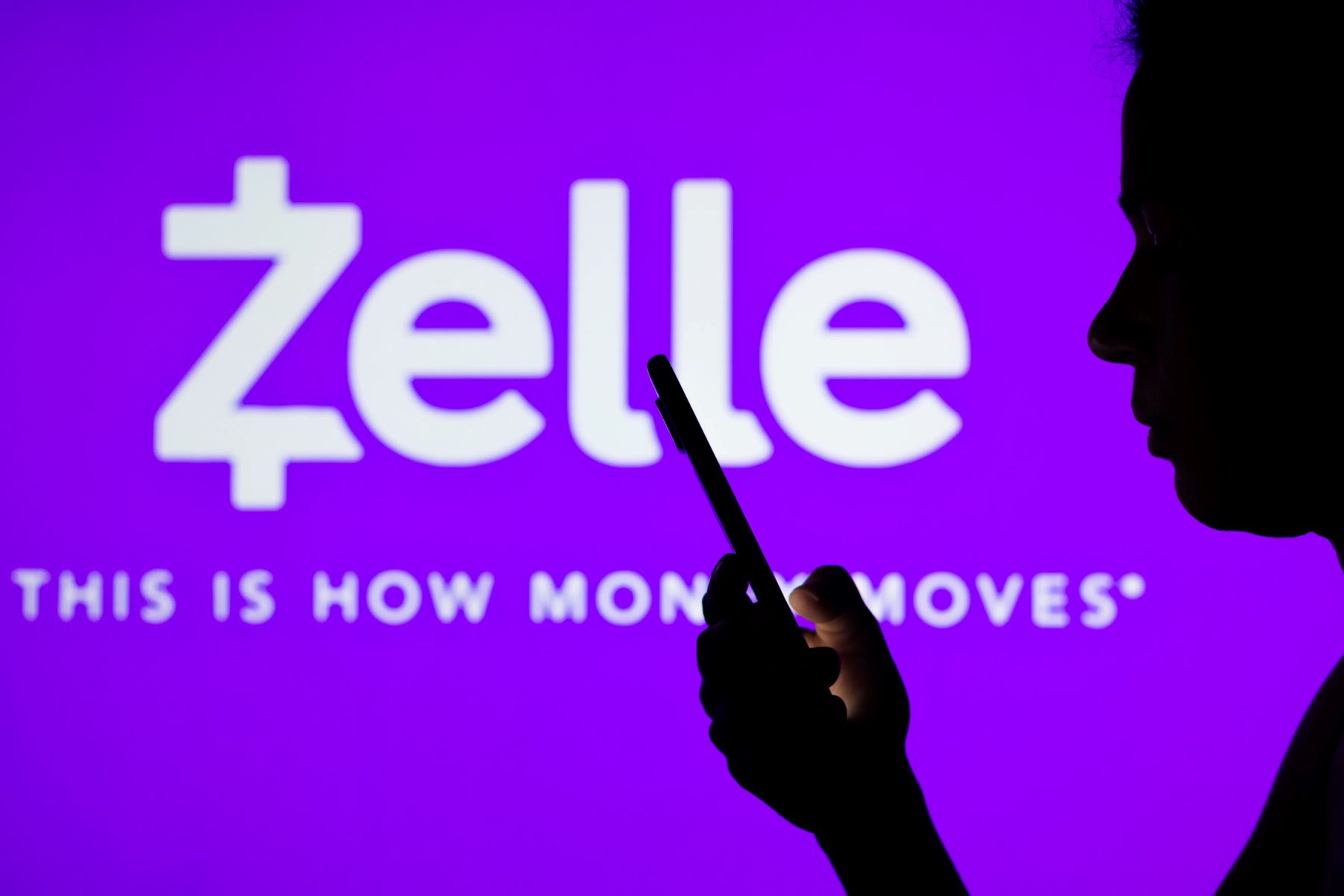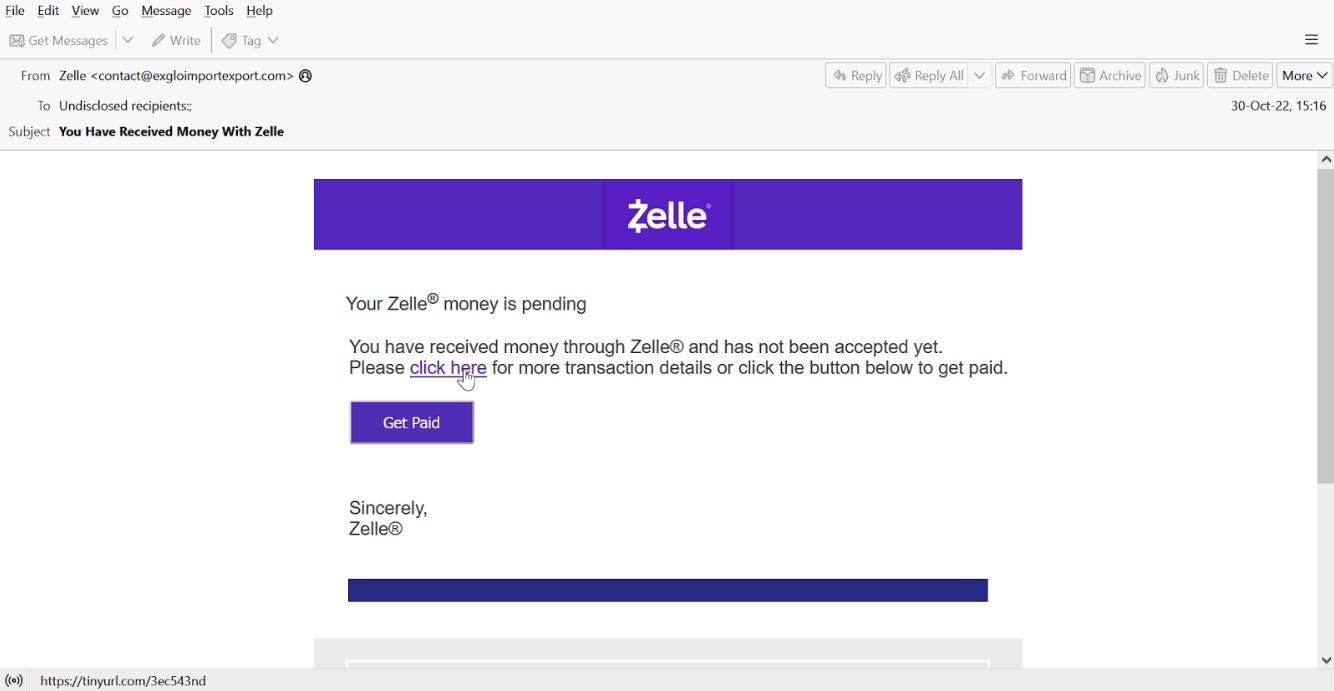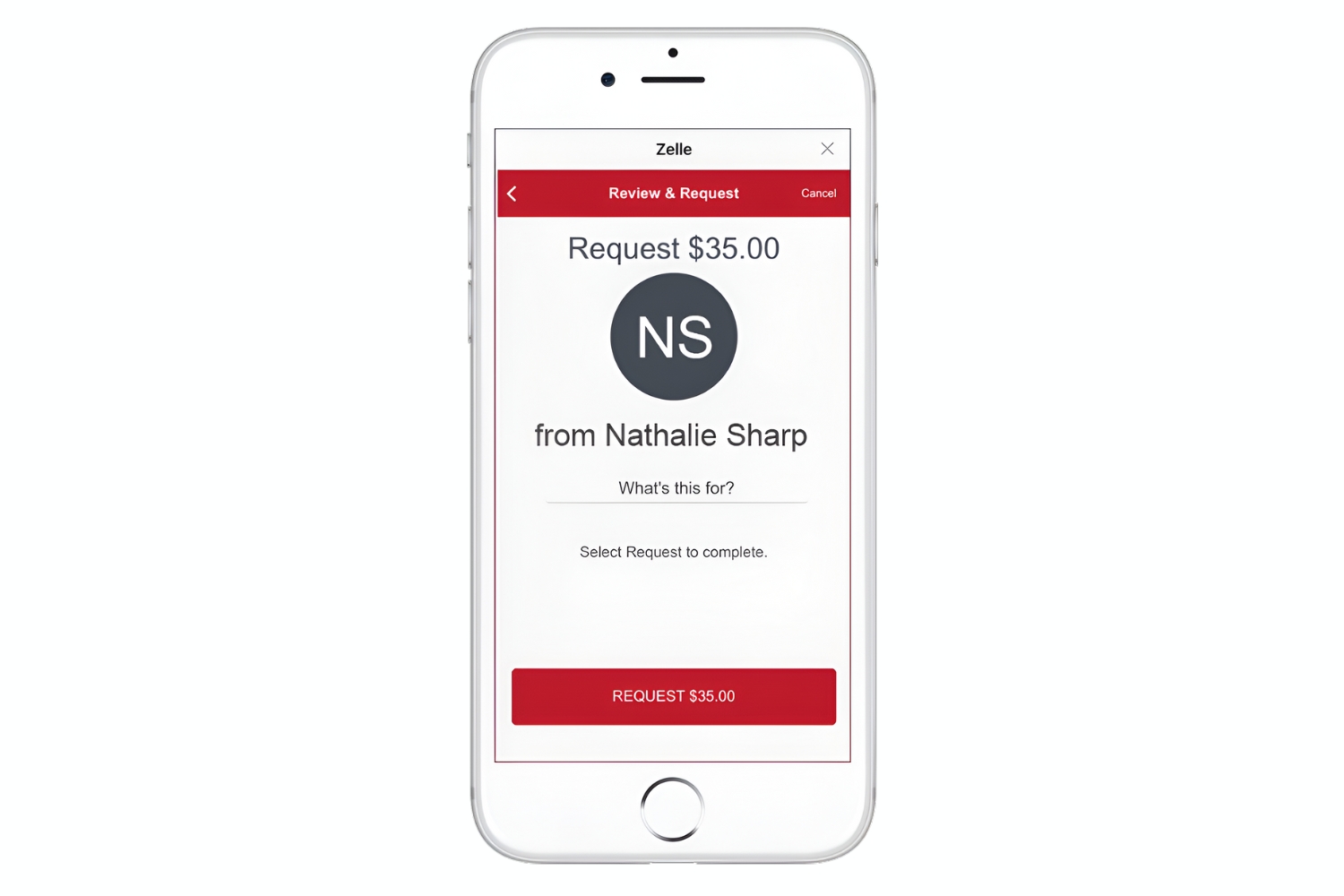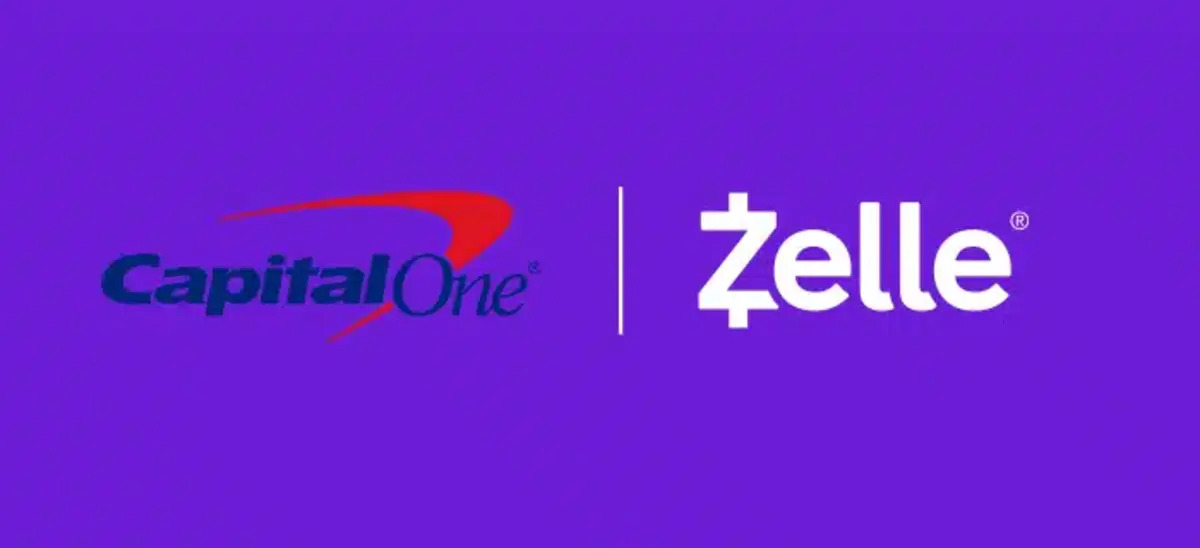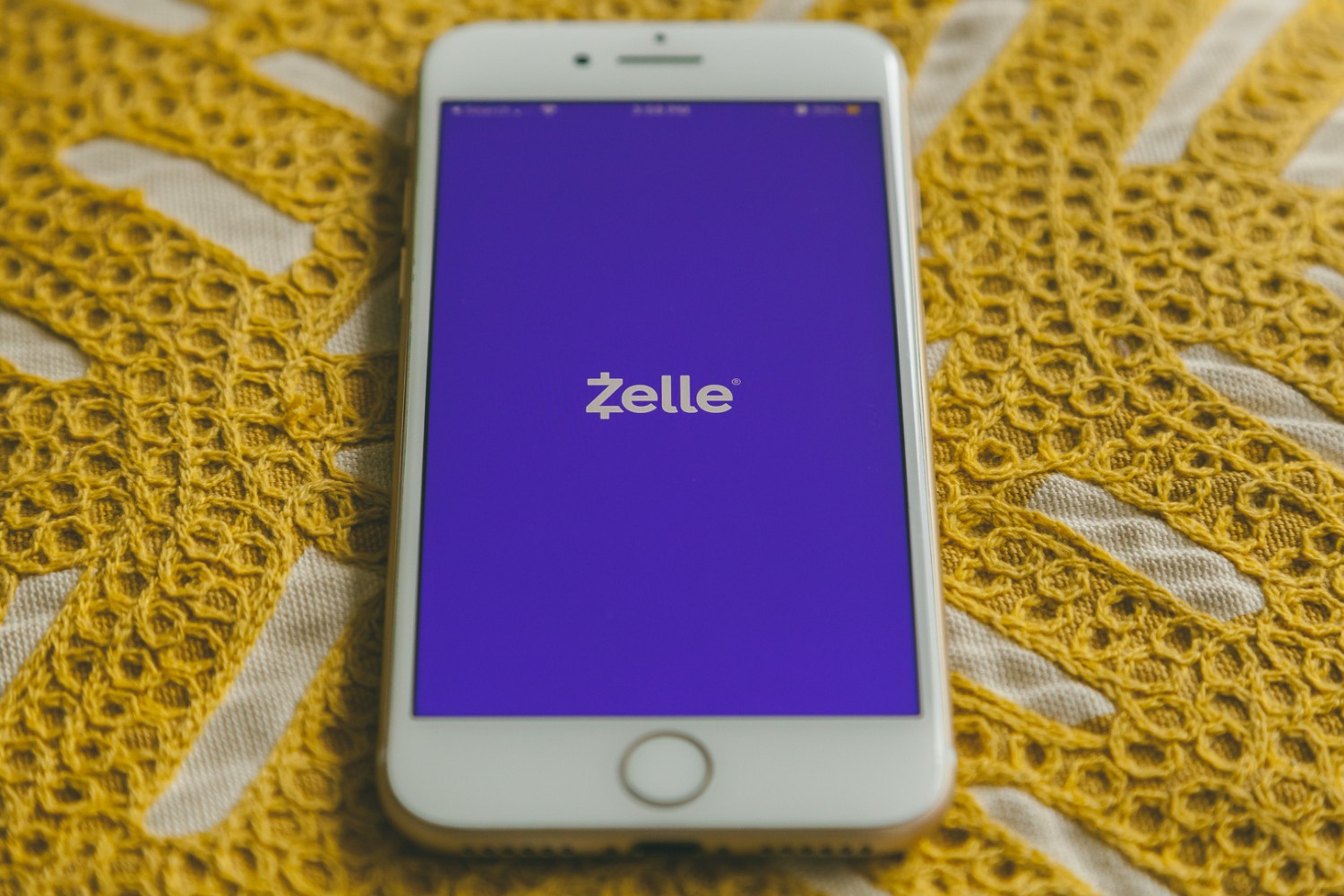Introduction
Welcome to the world of Zelle, a fast and convenient way to send and receive money directly from your bank account using just your email address or phone number. In today’s digital age, where online transactions have become the norm, it is important to stay vigilant and be aware of potential email scams. This article aims to shed light on what a legitimate Zelle email looks like, as well as how to recognize a fake one.
Zelle has revolutionized the way we handle money transfers. With its secure and straightforward process, users can easily send funds to friends, family, or businesses with just a few taps on their mobile devices or clicks on their computers. While this service offers convenience and efficiency, it is crucial to stay informed about potential email-based scams that may attempt to trick users into providing sensitive information.
Scammers are constantly devising new ways to deceive unsuspecting individuals, and Zelle users are not exempt from their tactics. By familiarizing yourself with the characteristics of a genuine Zelle email, you can avoid falling victim to these fraudulent schemes and protect your personal and financial information.
In the following sections, we will discuss the key elements that make up a legitimate Zelle email, including the sender’s email address, subject line, greeting, personalized information, body of the email, and footer. By understanding these components, you will be able to differentiate between a genuine Zelle email and a fake one.
Remember, being cautious and staying informed is essential in today’s digital landscape. Let’s dive into the world of Zelle emails and learn how to spot the real ones amidst the sea of scams.
What is Zelle?
Zelle is a popular peer-to-peer payment platform that allows users to send and receive money quickly and securely. It is available in the United States and offers a convenient way to transfer funds directly from one bank account to another. With Zelle, you can send money to friends, family, or even pay for goods and services from participating businesses.
Unlike traditional payment methods that require the exchange of bank account details or writing checks, Zelle simplifies the process by linking your bank account to your email address or phone number. This means you can easily transfer funds from your bank account to someone else’s account with just a few taps on your smartphone or clicks on your computer.
Zelle is integrated with major banks and credit unions in the United States, making it accessible to a wide range of users. Whether you’re using a mobile banking app or accessing your bank’s website, you can initiate a Zelle payment and transfer funds in real-time. The recipient will typically receive the funds instantly or within a few minutes, depending on their bank’s processing time.
One of the advantages of using Zelle is its simplicity and availability. As long as both the sender and recipient have a bank account linked to Zelle, they can initiate transactions without any additional setup. Furthermore, Zelle transactions are usually free, although it’s worth noting that some banks may impose certain limits or fees for larger transfers.
With its widespread adoption and ease of use, Zelle has become a popular alternative to traditional payment methods such as cash, checks, or even other peer-to-peer payment apps. Whether you need to split a bill at dinner, reimburse a friend, or pay a local business, Zelle offers a seamless and efficient solution for transferring money.
Now that we have a clearer understanding of what Zelle is and how it works, let’s dive deeper into how to identify a legitimate Zelle email to ensure that your transactions are safe and secure.
How does Zelle work?
Zelle works by leveraging the existing infrastructure of participating banks to facilitate quick and secure money transfers between users. To use Zelle, both the sender and recipient must have a bank account with a participating financial institution. Here’s a step-by-step breakdown of how Zelle works:
- Registration: To get started, you need to register for Zelle through your bank’s mobile app or website. The registration process typically involves linking your bank account to your email address or phone number.
- Transaction Initiation: Once registered, you can initiate a Zelle transaction by providing the recipient’s email address or phone number.
- Verification: Before the transaction is completed, Zelle verifies that both the sender and recipient have valid bank accounts linked to their respective email addresses or phone numbers.
- Funds Transfer: Once verified, the funds are securely transferred from the sender’s bank account to the recipient’s bank account. The transfer is typically processed almost instantly.
- Notification: Both the sender and recipient receive a notification confirming the successful transfer of funds.
- Availability: The recipient can then access the transferred funds in their bank account, typically within minutes.
Zelle’s integration with participating banks ensures that the transfer of funds occurs seamlessly within the existing banking infrastructure. This eliminates the need for third-party intermediaries and enables users to send and receive money directly with minimal delays.
One of the key advantages of using Zelle is that it allows for quick and convenient transactions without the need for cash or checks. Whether you’re splitting a bill with friends, reimbursing someone, or paying for a service, Zelle offers a straightforward solution that eliminates the hassle of handling physical currency or writing checks.
It’s worth noting that while Zelle transactions are typically processed quickly, the exact timing may vary depending on the participating banks involved. It’s always a good idea to check with your bank for any specific processing times or limitations.
Now that we have explored how Zelle works, let’s delve into why it’s important to be aware of Zelle emails and how to identify legitimate ones to protect yourself from scams.
Why do I need to be aware of Zelle emails?
As Zelle has gained popularity as a convenient way to send and receive money, scammers have also become adept at using Zelle emails as a tool for fraud. Being aware of potential scam emails is crucial to protect yourself from falling victim to these scams. Here are a few reasons why you need to be cautious of Zelle emails:
1. Phishing attempts: Scammers may send fake Zelle emails that mimic the appearance of legitimate ones. These emails often contain malicious links or attachments that can capture your personal and financial information. By being aware of the characteristics of a legitimate Zelle email, you can recognize and avoid falling for phishing attempts.
2. Identity theft: Fraudulent Zelle emails may ask you to provide sensitive information such as your account credentials, Social Security number, or other personal details. By tricking users into sharing this information, scammers can commit identity theft, accessing your financial accounts, and potentially causing significant damage.
3. Unauthorized transactions: Fake Zelle emails may prompt you to click on a link or provide your banking details in order to resolve a supposed issue with your account. This can lead to unauthorized transactions or the compromise of your bank account, putting your funds at risk.
4. Loss of money: If you unknowingly provide your Zelle account information in response to a scam email, scammers can gain access to your funds and make unauthorized transfers. By being aware of the warning signs of fake emails, you can avoid losing money to these fraudulent activities.
5. Damage to your reputation: Scammers may use compromised Zelle accounts to carry out their illegal activities, such as sending malicious emails or making fraudulent transactions in your name. This can not only cause financial harm but also damage your reputation.
By staying vigilant and familiarizing yourself with the characteristics of legitimate Zelle emails, you can protect yourself from these potential risks and ensure the safety of your personal and financial information.
In the next section, we will examine the key elements that make up a legitimate Zelle email, enabling you to distinguish between genuine and fake emails.
What does a legitimate Zelle email look like?
Recognizing a legitimate Zelle email is crucial in protecting yourself from scams and fraudulent activities. While scammers may attempt to create fake emails that mimic the appearance of genuine ones, there are key elements to look out for to confirm the legitimacy of the email:
1. Sender’s email address: A legitimate Zelle email will always be sent from an official Zelle email address, typically ending with “@zellepay.com” or “@zelle.com. Be cautious if the email address appears suspicious or differs from the official ones.
2. Subject line: Legitimate Zelle emails usually have a clear and concise subject line related to the transaction or account activity. They typically avoid using generic or vague subject lines.
3. Greeting: Genuine Zelle emails tend to address you personally and may include your name or the name associated with your account. Be cautious if the email does not address you by name or uses generic greetings like “Dear Customer” or “Valued User”.
4. Personalized information: Legitimate Zelle emails may reference specific transactions, account activity, or other personalized information related to your account. Scammers often send generic emails lacking personalized details, so be wary of emails that do not contain specific information about your account or recent transactions.
5. Body of the email: A genuine Zelle email will contain clear and concise information about the transaction or account activity. It should provide accurate details such as the amount, recipient’s name or email address, and the date of the transaction. Watch out for emails with vague or inaccurate information.
6. Footer: Legitimate Zelle emails usually include a professional-looking footer with contact information, such as a helpline number or a link to the official Zelle website. Pay attention to any inconsistencies or missing contact information in the email footer.
When reviewing a Zelle email, it is important to carefully examine all these elements to determine its authenticity. Remember that scammers can be sophisticated and may attempt to imitate genuine emails, so always double-check the email address, content, and any attached links or documents.
It’s worth noting that Zelle will never request your personal or banking information through email. If you receive an email asking for such information or suspect a Zelle email to be fraudulent, it is best to contact Zelle’s customer support directly to verify its legitimacy.
Now that we know how to recognize a legitimate Zelle email, let’s explore how to identify a fake Zelle email in the next section to further protect ourselves from scams and fraud.
Sender’s email address
The sender’s email address is one of the first indicators of a legitimate Zelle email. A genuine Zelle email will always come from an official Zelle email address, typically ending with “@zellepay.com” or “@zelle.com”. It is important to carefully examine the email address to confirm its authenticity.
Here are some key points to consider when evaluating the sender’s email address:
– Check for a consistent domain: Legitimate Zelle emails will have a domain that matches the official Zelle domain. For example, an official Zelle email address could be “notifications@zellepay.com” or “noreply@zelle.com”. Be cautious if the domain does not match or if it contains any additional or misspelled words.
– Be aware of variations or misspellings: Scammers may try to mimic official email addresses by using similar-looking addresses or slight misspellings. For example, they may use “zellepayments.com” or “zellepayinfo.com”. Pay close attention to any variations in the email address that could indicate a fake email.
– Consider the email format: Legitimate Zelle emails typically follow a standardized format, with the sender’s email address appearing professional and consistent. Scammers may use generic email addresses or addresses that appear unprofessional. Be cautious if the email address looks suspicious or differs from the official Zelle email format.
It’s important to note that scammers can be sophisticated and may attempt to create emails that closely resemble legitimate ones. They might use tactics such as email spoofing to manipulate the sender’s email address. Therefore, it’s essential to carefully analyze the entire email, including other key elements, to determine its authenticity.
If you have any doubts about the sender’s email address, it’s always recommended to contact Zelle’s customer support directly. They can verify the legitimacy of the email and provide guidance on further actions to take.
In the next section, let’s explore the second key element of a legitimate Zelle email: the subject line. Understanding what a genuine subject line looks like will help you identify potential fake Zelle emails and protect yourself from scams.
Subject line
The subject line of a Zelle email is another important element to consider when determining its legitimacy. A genuine Zelle email will typically have a clear and concise subject line that relates to the transaction or account activity. Paying attention to the subject line can help you identify potential fake Zelle emails and protect yourself from scams.
Here are some guidelines to consider when evaluating the subject line of a Zelle email:
– Specificity: Legitimate Zelle emails usually have subject lines that provide specific details related to the transaction or account activity. For example, a subject line such as “Payment Confirmation for $50 to John Doe” indicates a specific transaction. Be cautious if the subject line is too generic or vague, such as “Important Information” or “Zelle Notification”.
– Consistency: Genuine Zelle emails typically maintain consistent subject line formats. This helps establish brand recognition and reinforces the authenticity of the email. Watch out for subject lines that deviate from the usual Zelle email formats, as it could be a sign of a fake email.
– Relevance: Legitimate Zelle emails will have subject lines that are relevant to your account and recent activity. Scammers may try to grab your attention by using sensational or urgent subject lines, such as “Action Required Immediately” or “Your Account Has Been Compromised”. Be cautious of subject lines that feel overly urgent or unrelated to your usual Zelle transactions.
It’s important to remember that scammers may attempt to create subject lines that mimic legitimate Zelle emails to deceive recipients. They might use psychological tactics to evoke emotions or create a sense of urgency. Therefore, it’s crucial to review the entire email, including other key elements, and not solely rely on the subject line to determine the email’s authenticity.
If you have any doubts about the subject line or suspect a Zelle email to be fraudulent, it’s recommended to reach out to Zelle’s customer support directly for clarification. They can confirm the legitimacy of the email and provide further guidance on how to proceed.
In the next section, we will explore the third key element of a legitimate Zelle email: the greeting. Understanding what a genuine greeting looks like will further enable you to identify potential fake Zelle emails and protect yourself from scams.
Greeting
The greeting in a Zelle email is an important element to consider when determining the email’s legitimacy. A genuine Zelle email will usually address you personally or include your name, creating a sense of personalized communication. Paying attention to the greeting can help you identify potential fake Zelle emails and protect yourself from scams.
Here are some key points to consider when evaluating the greeting of a Zelle email:
– Personalization: Legitimate Zelle emails often address you by name or the name associated with your account. For example, a genuine email may greet you with “Dear John Doe” or “Hello Sarah”. Be cautious if the email uses generic or impersonal greetings like “Dear Customer” or “Valued User”, as this could be a red flag.
– Consistency: Genuine Zelle emails maintain consistency in the greeting and overall tone. They usually adopt a professional and polite tone, aligning with the expected communication style of a legitimate financial service. Watch out for emails with inconsistent or unprofessional greetings, as it may indicate a fake email.
– Grammar and language: Legitimate Zelle emails employ proper grammar and appropriate language. They aim to instill trust and provide clear communication. Be wary of emails with noticeable grammar errors, excessive use of capital letters, or poor language, as scammers often overlook these details in their fraudulent attempts.
It’s important to note that scammers may attempt to create emails that mimic genuine Zelle emails by using personalized information or adopting a friendly tone. However, analyzing the entire email, including other key elements, is crucial in determining its authenticity.
If you have any doubts about the greeting or suspect a Zelle email to be fraudulent, it’s recommended to contact Zelle’s customer support directly. They can verify the legitimacy of the email and provide further guidance on how to proceed.
In the next section, we will explore the fourth key element of a legitimate Zelle email: personalized information. Understanding what personalized information looks like in a genuine Zelle email will help you differentiate it from potential fake ones and protect yourself from scams.
Personalized Information
Personalized information is a critical element to consider when evaluating the legitimacy of a Zelle email. Genuine Zelle emails often include specific details related to your account, recent transactions, or other personalized information that is relevant to you. Paying attention to personalized information can help you distinguish between a legitimate Zelle email and a potential fake one.
Here are some key points to consider when evaluating the personalized information in a Zelle email:
– Transaction details: Legitimate Zelle emails will typically provide specific details about a transaction, such as the amount, recipient’s name or email address, and the date of the transaction. This information should align with your recent activity. Be cautious if the email lacks specific transaction details or if the information provided is inaccurate or inconsistent with your Zelle transactions.
– Account activity: Genuine Zelle emails may reference recent account activity or changes related to your Zelle account. For example, it could mention an update to your contact information or a notification about a new recipient added to your account. Be wary of emails that contain generic or irrelevant account-related information.
– Personal identifiers: Legitimate Zelle emails may include personal identifiers such as the last digits of your bank account or the phone number linked to your Zelle account. Scammers may lack this level of personalized information or provide inaccurate identifiers. Be cautious if the email does not provide any personal identifiers or if the information provided is incorrect or inconsistent with your account.
Analyzing the personalized information provided in a Zelle email is crucial in determining its authenticity. Scammers may attempt to create fake emails that mimic genuine ones by including generic or nonspecific information. However, by carefully reviewing the entire email, including other key elements, you can better differentiate between a legitimate Zelle email and a potential fake one.
If you have any doubts about the personalized information in a Zelle email or suspect it to be fraudulent, it’s recommended to reach out to Zelle’s customer support directly. They can verify the legitimacy of the email and provide further guidance on how to proceed.
In the next section, we will explore the fifth key element of a legitimate Zelle email: the body of the email. Understanding what a genuine email body looks like will further enable you to identify potential fake Zelle emails and protect yourself from scams.
Body of the Email
The body of the email is a crucial element to consider when evaluating the legitimacy of a Zelle email. A genuine Zelle email will have a well-structured and informative body that provides clear and relevant information. Examining the body of the email can help you differentiate between a legitimate Zelle email and a potential fake one.
Here are some key points to consider when evaluating the body of a Zelle email:
– Clear transaction details: Legitimate Zelle emails will provide clear and concise details about the transaction, including the amount, recipient’s name or email address, and the date of the transaction. The information should align with your recent Zelle activity. Be cautious of emails that lack specific transaction details or have vague or inconsistent information.
– Professional tone: Genuine Zelle emails typically adopt a professional and polite tone in their communication. They use proper grammar and language to provide a clear and coherent message. Be wary of emails with unprofessional language, excessive use of capital letters, or noticeable grammar errors, as these can be indications of a fake email.
– Consistency with Zelle branding: Legitimate Zelle emails often maintain consistency with the branding and formatting of official Zelle communications. They may include Zelle logos or designs that align with the brand’s visual identity. Scammers may lack this level of consistency or provide poor quality images or logos. Pay attention to any inconsistencies with Zelle branding in the email body.
– Avoidance of suspicious requests: Genuine Zelle emails will never ask for your personal or banking information through email. Be cautious of emails that request such information or prompt you to click on suspicious links or download attachments. Legitimate Zelle emails focus on providing information and do not seek to gather sensitive data.
By carefully reviewing the body of a Zelle email and considering these key points, you can better assess its authenticity. Scammers may attempt to create fake emails that mimic genuine ones, but by analyzing the entire email and comparing it to the characteristics of legitimate Zelle emails, you can identify potential fake emails and protect yourself from scams.
If you have any doubts about the authenticity of a Zelle email or suspect it to be fraudulent, it’s recommended to contact Zelle’s customer support directly. They can verify the legitimacy of the email and provide further guidance on how to proceed.
In the next section, we will explore the importance of reviewing the footer of a Zelle email to help determine its legitimacy.
Footer
The footer of a Zelle email is an important element to consider when evaluating its legitimacy. A genuine Zelle email will usually have a professional and well-designed footer that provides relevant contact information and reinforces the authenticity of the email. Examining the footer can help you identify potential fake Zelle emails and protect yourself from scams.
Here are some key points to consider when evaluating the footer of a Zelle email:
– Contact information: Legitimate Zelle emails will typically include contact information in the footer, such as a helpline number or a link to the official Zelle website. This information is provided to assist customers with any questions or concerns. Be cautious if the email lacks proper contact information or if the information provided is inconsistent or redirects to suspicious websites.
– Consistency with Zelle branding: Genuine Zelle emails maintain consistency with the branding and visual identity of official Zelle communications in the footer. This includes the use of appropriate logos, colors, and formatting. Scammers may lack this level of consistency or provide poor quality images or logos. Pay attention to any inconsistencies with Zelle branding in the footer.
– Absence of suspicious links or attachments: Legitimate Zelle emails will not contain suspicious links or attachments in the footer. Be cautious of emails that include links or files that prompt you to provide personal or banking information, as these are red flags for potential scams. Legitimate Zelle emails focus on providing helpful information rather than gathering sensitive data.
Carefully reviewing the footer of a Zelle email and considering these key points is crucial in determining its authenticity. Scammers may attempt to create fake emails that mimic genuine ones, but by thoroughly examining the entire email and comparing it to the characteristics of legitimate Zelle emails, you can identify potential fake emails and protect yourself from scams.
If you have any doubts about the authenticity of a Zelle email or suspect it to be fraudulent, it’s recommended to contact Zelle’s customer support directly. They can verify the legitimacy of the email and provide further guidance on how to proceed.
Now that we have explored the key elements of a legitimate Zelle email, let’s move on to the next section and discuss how to recognize a fake Zelle email to further protect ourselves from potential scams and fraud.
How to Recognize a Fake Zelle Email?
Recognizing a fake Zelle email is crucial in protecting yourself from potential scams and fraudulent activities. Scammers are becoming increasingly sophisticated in their attempts to deceive users, but there are key signs to watch out for to help identify a fake Zelle email:
1. Unusual sender’s email address: Fake Zelle emails often come from suspicious or unrelated email addresses that do not match the official Zelle email format. Be cautious of email addresses that contain misspellings, additional words, or unfamiliar domains.
2. Generic or vague subject line: Scammers may use generic subject lines that lack specific details related to a transaction or account activity. Watch out for subject lines that are overly vague or sensational, aiming to evoke a sense of urgency or curiosity.
3. Impersonal greeting: Fake Zelle emails often use generic greetings such as “Dear Customer” or “Valued User” instead of addressing you by name or using personalized information associated with your account.
4. Lack of personalized information: Scammers may send generic emails that do not contain specific details about transactions or account activity. Be cautious if the email lacks personalized information or if the information provided is inconsistent, inaccurate, or unrelated to your Zelle account.
5. Poor grammar and language: Fake Zelle emails may contain noticeable grammar errors, excessive capitalization, or unprofessional language. Legitimate Zelle emails prioritize clear and coherent communication, so be wary of language that appears unprofessional or lacks proper grammar.
6. Suspicious requests for personal information: Fake Zelle emails often ask for personal or banking information through email, which legitimate Zelle emails will never do. Be cautious of emails that request sensitive data or prompt you to click on suspicious links or download attachments.
7. Inconsistencies with Zelle branding: Scammers may lack consistency in the branding and formatting of their emails. Pay attention to any inconsistencies or poor-quality logos, images, or formatting that deviate from the official Zelle communications.
8. Unusual or missing footer: Fake Zelle emails may lack contact information or redirect to suspicious websites. Legitimate Zelle emails typically provide relevant contact details, such as a helpline number or a link to the official Zelle website.
Staying vigilant and examining the entire email for these signs can help you identify potential fake Zelle emails and protect yourself from scams. If you ever doubt the legitimacy of a Zelle email, it is recommended to contact Zelle’s customer support directly to verify its authenticity.
In the next section, we will conclude our discussion on Zelle emails and emphasize the importance of being cautious and proactive in protecting yourself from scams and fraudulent activities.
Conclusion
As Zelle continues to be a popular method for sending and receiving money, it is essential to be aware of potential scams and fraudulent activities that can occur through Zelle emails. By understanding the key elements of a legitimate Zelle email, you can better protect yourself from falling victim to these scams.
Remember to thoroughly analyze the sender’s email address, subject line, greeting, personalized information, body of the email, and footer when evaluating the legitimacy of a Zelle email. Look for consistency, professionalism, and relevant details that align with your account and recent transactions.
Be cautious of fake Zelle emails with suspicious email addresses, generic subject lines, impersonal greetings, lack of personalized information, poor grammar and language, requests for personal information, inconsistencies with Zelle branding, and unusual or missing footers.
If you ever suspect a Zelle email to be fraudulent, it is always recommended to contact Zelle’s customer support directly. They can help verify the legitimacy of the email and provide guidance on the necessary steps to take to protect yourself.
By staying vigilant and knowledgeable about the characteristics of a legitimate Zelle email, you can safely use Zelle for your financial transactions and ensure the security of your personal and financial information.
Remember, when it comes to email safety, it is better to be cautious and skeptical than to fall victim to scams. Stay informed, stay vigilant, and protect yourself from Zelle email fraud.







